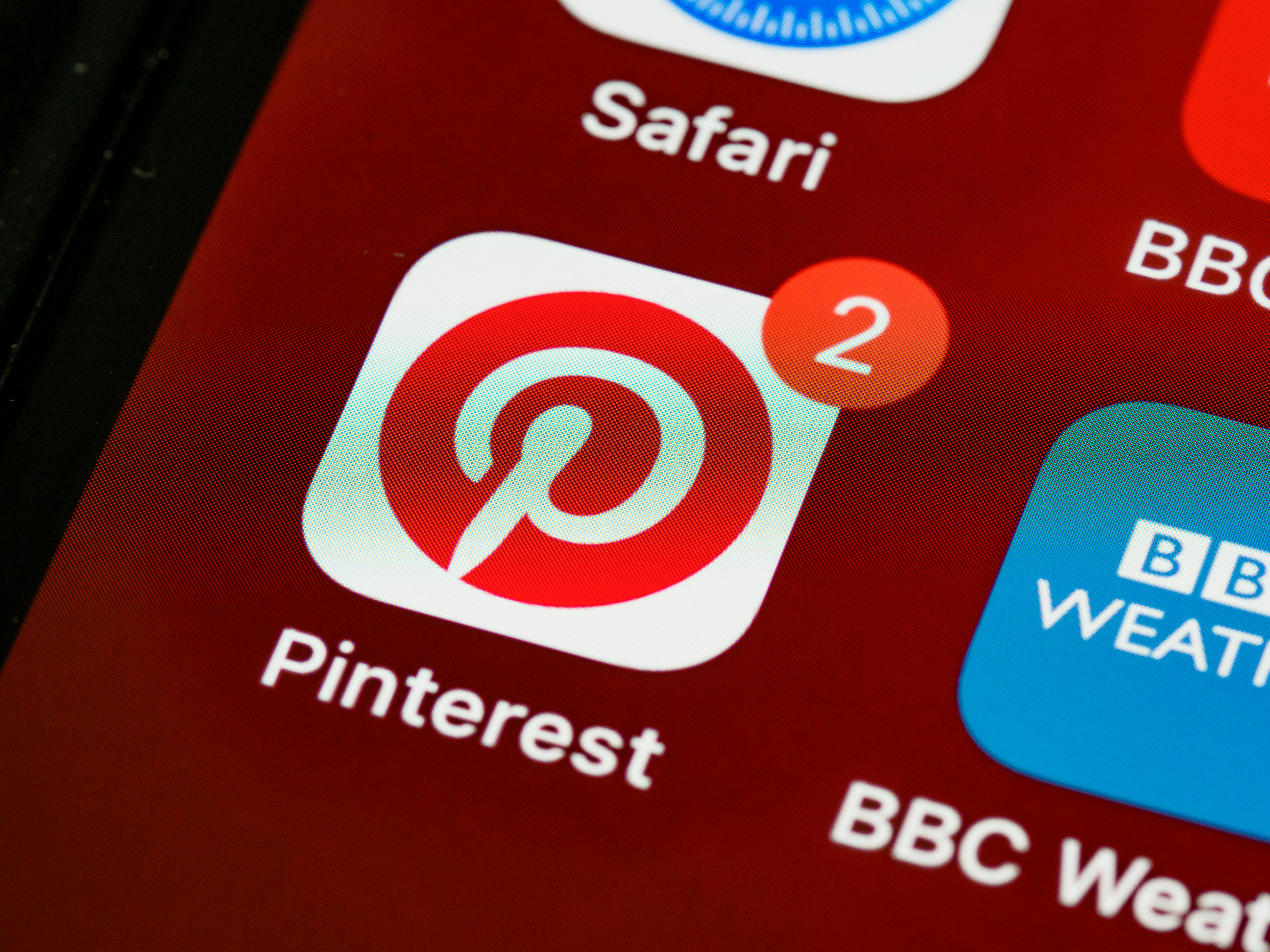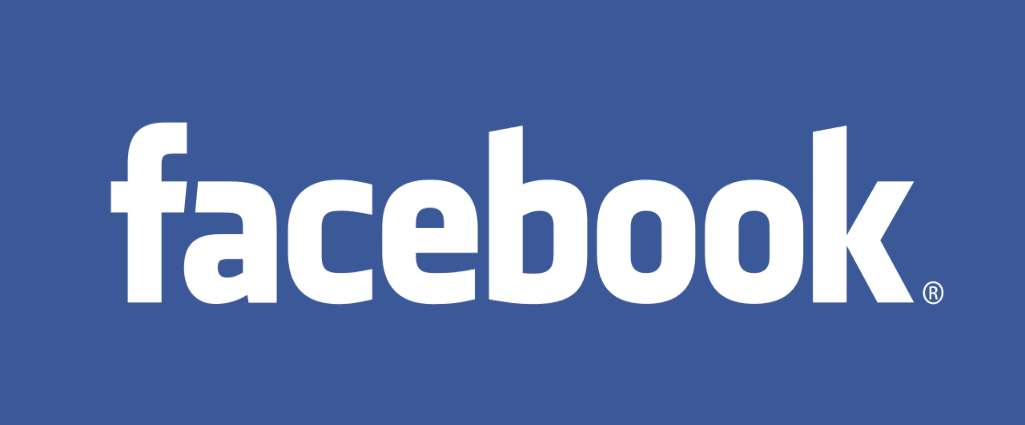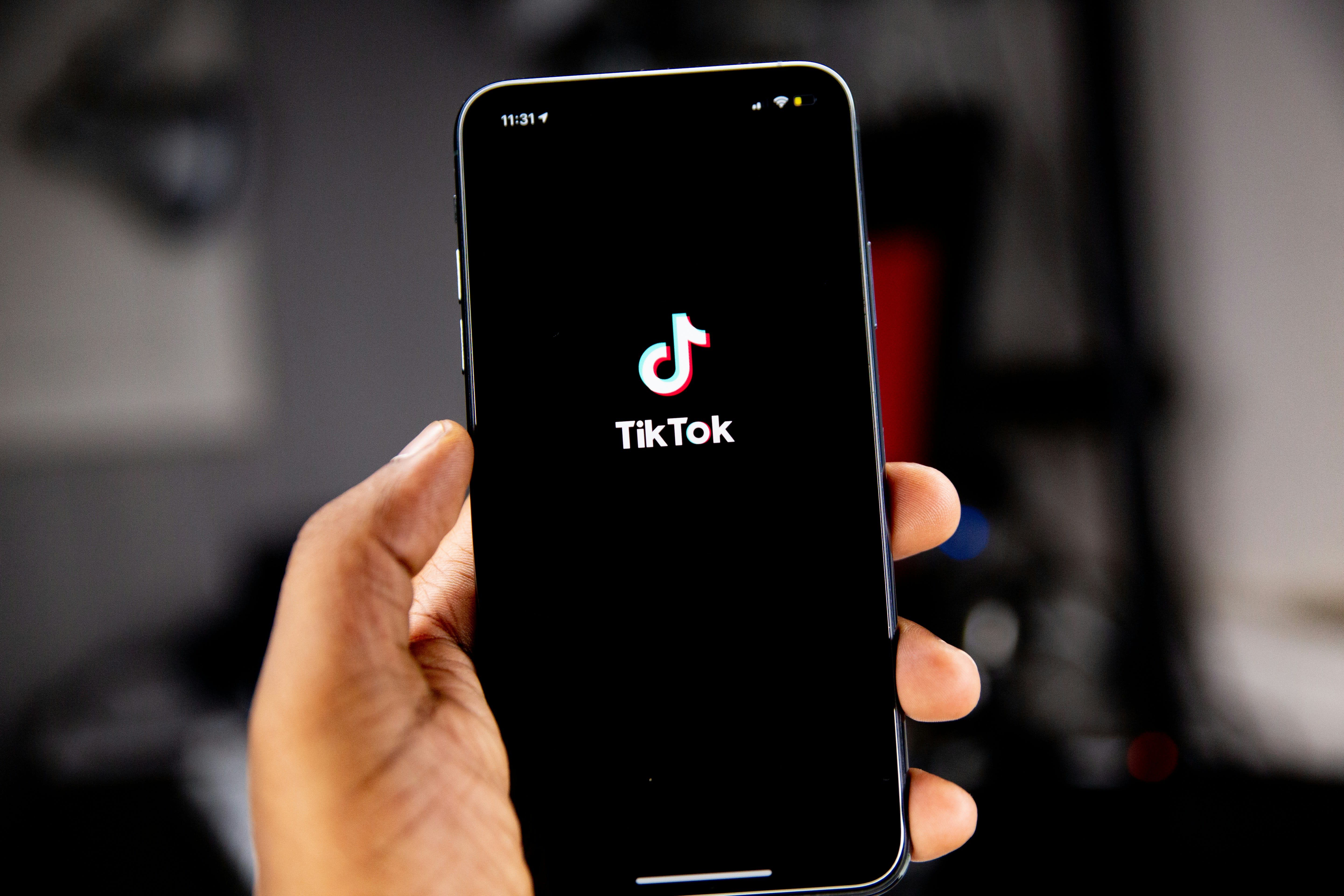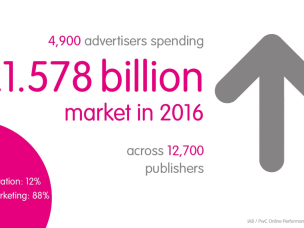Social media affiliate marketing
Written by Emma Sharp on 15 minute read
In recent years, social media’s rapid growth has resulted in it becoming one of the largest and most dynamic mediums for affiliate marketing success.

With over over 4.95 billion people worldwide estimated to be using social media, and digital media consumption growing, it’s no surprise that affiliate marketers are making these platforms a major focus. Read on to discover how to use social media to promote affiliate links and which platforms are the best for affiliate marketing.
What is social media affiliate marketing?
Social media affiliate marketing is an approach that sees affiliate links shared on social media posts and profiles to encourage engagement and clicks from both the account’s followers and related audiences.
Social media affiliate marketing also provides publishers with an additional layer of trust. People using social media are more inclined to trust the recommendations of their ‘friends’ and pages they have chosen to follow than those that have been pushed by traditional advertising techniques.
How to use social media to promote affiliate links
Social media provides a wide range of methods for promoting affiliate links:
- Automatically (via convert-a-link) to turn any direct links to advertisers into affiliate links.
- Using text links built using a tool like Awin’s Link Builder.
- Using feeds to create comparisons between products or prices.
- With banners, content widgets or other types of creative.
As with other forms of affiliate marketing, simply including the links in posts isn’t enough. The account should first establish a following for its expertise in a relevant subject area. By being an authority and producing high-quality content, follower numbers will grow organically and create an engaged audience for affiliate marketing activities. For this reason, social media affiliate marketing also falls into a similar sphere as influencer marketing, as many of the platforms are the same. However, influencer marketing may not include affiliate links within the content, but instead drive desire and brand recognition. This can lead to eventual, but perhaps not immediate, future sales for an advertiser - thankfully this sphere of influence is something we can track with the data on our platform (where links have been included).
It’s important as a publisher to assess which platform could work best for both the product and your own brand. If you have a large following or a ready-built audience on a particular social media channel, you should think carefully about how you can work an advertiser’s product or service into a content style that your audience would find appealing.
The best social media platforms for affiliate marketing
There are so many social media platforms available that it could be tempting to sign up to as many as possible, but there are important nuances to consider first. Operating on multiple platforms will require an understanding of the different approach to content style, presentation and user expectations for each.
Not every platform will be a good match for your approach and each has their own pros and cons which need to be considered. The key to choosing the best social media platform for your affiliate marketing campaigns will depend on your niche, products and content. Here is a breakdown of six of the most popular social media platforms for affiliate marketing today:
Affiliate Marketing on Instagram
Instagram has become an affiliate marketer’s dream platform, provided you know how to optimise your content for the end-user. It’s a visual social media platform meaning the content you create must be focused around the image you post. People have found many creative ways to make this imagery engaging to an audience, sometimes with the text caption being very loosely connected (or sometimes not at all) to the image posted.
- At present, Instagram does not allow external links to be clickable within the caption or the comments of your posts unless you are using paid advertising. If you have a short and easy to remember link you can mention it in the caption, but typically this isn’t something we see users leaving the app to do. This functionality has been rumoured to be changing on the platform soon, but as it stands, it’s a limitation.
- The most common place to position affiliate links is within your page bio, as here it’s clickable.
- If you have a business page on Instagram you can also make your images shoppable and embed your affiliate link for a user to click through and purchase. This requires a little more setup, but is certainly worthwhile if you’re promoting a physical product.
- You can use Instagram Stories to direct your audience to your affiliate link by adding link stickers directly into your story.
- Using relevant hashtags can help push your content further, but you’ll need to do some hashtag research first. Make sure you’re familiar with the correct use of popular hashtags, the reach they allow and the potential negative implications of overuse of irrelevant hashtags.
- Transparency about your advertising has become increasingly important with new and altering privacy and disclosure laws. The Advertising Standards Authority (ASA) is the UK’s advertising regulator and provides a wealth of information about how you need to disclose ads on the platform.
What about Threads?
Introduced in 2023, Threads is a new app from Instagram owners Meta for text-based conversations (essentially a rival to X). After 30 million signups on its first day, Threads had reached 160 million users by January 2024.
While the platform is still in its infancy today, it is likely to become a very important social media platform for affiliate marketing in the coming years as it continues to grow and we learn more about how it differs from other platforms.
Affiliate Marketing on Pinterest
Pinterest is a dark horse when it comes to social media affiliate marketing. It’s not the first platform that comes to mind, but it has an exceptionally large user-base and those on the platform are very engaged with the content. It’s also a high ranking website, meaning relevant content on the platform often sits higher on the Search Engine Results Page (SERP).

Pinterest does allow users to include affiliate links directly in their pins, but there are some grey areas with what is and isn’t allowed:
- You cannot use images which are connected with an Amazon product
- Using a URL shortener to post your link is not allowed
- You must disclose your affiliate connection to a product or service.
To start pushing your affiliate link on Pinterest you can simply create a pin of your own and supply your affiliate link as the URL for that pin. Alternatively, you can pin existing products and then using the edit button, you can replace the original link with an affiliate link. The latter being the most common and easiest way to use affiliate links on Pinterest, by bolstering the popularity of an existing pin.
Through your account, you should attempt to create a level of professionality by posting your own pins, creating your own boards and interacting genuinely with other users. People appreciate valuable and relevant information on Pinterest, as well as authenticity.
Affiliate Marketing on YouTube
YouTube can be an excellent tool for social media affiliate marketing. Technically, it is the world’s second-largest search engine and, as of January 2024, has 2.7 billion users.
As much as you may be focusing your SEO efforts on Google, YouTube could potentially be the next best place to direct your attention.

Affiliates can post their links in a few places on YouTube, including in the video description or as annotations within the video content itself. People also use their accounts to find other relevant discussions around their product, brand or topic and suggest their link may be useful in the comments section.
The content for YouTube can take longer to create than on some other platforms, but given some practice, many advertisers and publishers are reaping the benefits. At Awin, we’ve covered seven reasons why YouTube is an essential part of affiliate marketing as we believe so many content creators are undervaluing its potential.
Affiliate marketing on X (formerly Twitter)
When Twitter became X in July 2023 it triggered a lot of changes to how the platform operated, but affiliate marketing has remained with minimal changes.
While the content is often short-form, X can have a large impact. As of 2023, there were approximately 556 million active users on the platform each month, and those who are active are really active. While the platform's famously short character limit was lifted from 140 to 280 characters in 2017, increased use of video and message threads in recent years mean that X provides more than enough flexibility for you to effectively get your message across.

- To monetise your offering you can add your affiliate link into your posts, which will automatically be shortened, but be aware this will still consume a large portion of your character count.
- Be clear in what you want the readers of your tweet to do, what questions your link will answer or what problem it will solve.
- By including relevant hashtags, your tweet will become part of wider conversations and be seen by more users. It’s even more valuable if you can find a way to make your affiliate product part of the conversation on a trending topic. However, always make sure that your link and tweet is relevant to the topic, if not it could be seen as damaging or devaluing the brand you’re representing.
- You can pay to promote a message on X. If you feel this piece of content could really be relevant to many users, but you simply don’t have the following yet, this can be a great option. Once again though, you should calculate your ROI as to whether this is a viable option or not.
Affiliate Marketing on Facebook
Facebook is still the number one most used social media platform in the world, making it a great place to have a presence, whether you’re an advertiser or a publisher. In both cases, we’d always advise creating a Facebook page, as opposed to using personal profiles. Though posting your affiliate link on your profile will help it reach your social circle, posts from a page allow greater access to services, capabilities, data and analytics.

On Facebook, there are a number of different ways to insert your affiliate link into your content:
- Add affiliate links to the text on your posts or use ‘link’ posts which redirect straight to your advertiser’s website.
- You can add buttons embedded with your affiliate link on your page, for example, a ‘Shop now’ or a ‘Learn more’ button.
- There’s also the possibility to use your page to comment in groups owned by others or on posts by others, adding to the conversation and mentioning that you have a link they may find useful. It’s key to remember to not come across as spam when doing this and to only provide your link if it’s relevant to the topic or conversations. People are becoming savvier in recognising what’s a sales pitch and what’s a genuine comment, offering value to the conversation.
- Many also recommend creating Facebook Ads to increase the clicks on your affiliate links. Though we don’t actively discourage this, as a publisher it’s important to look at the numbers here. Establish what your Cost Per Click (CPC) is and compare it to your affiliate payment rate per sale. If the CPC is higher, you aren’t seeing a return on investment (ROI) and your efforts are being wasted.
Affiliate Marketing on TikTok
Since its launch in 2016, TikTok has exploded from a curious short-form video platform to a cultural giant that generates dances, trends and memes perpetually. If you’ve seen a new trend on any other platform, it’s likely that it originated from TikTok.
As of 2024 TikTok has 1.7 billion registered users globally, with users spending more time on the platform per day than any other social media service, making it an ideal platform for affiliate marketing.

TikTok is generally considered to be a platform for young people and this remains largely true, with the majority being under 30 and just 11% over 50 years old, so make sure your products are relevant to this audience and that your content is presented in a way that is engaging.
Keep in mind that organic reach on the platform is absolutely huge and can be utilised in the following ways:
- Links from your profile
- Promote coupon codes/URLs in your videos
- Include an affiliate URL in content description
It’s great that organic is so effective, because TikTok ads are expensive! TikTok for Business has a range of powerful features, but their pricing could make them unobtainable for small businesses and social media affiliate marketers. TikTok lists the cost of campaigns currently as a $50 minimum spend per day.
Other platforms to consider
Outside of these ‘big six’, there are still many more excellent social media platforms where you can speak to large audiences and should be considered for creating influence around a brand, business or product. Both of these example platforms are household names that have users in the hundreds of millions:
Snapchat

While Snapchat has fallen behind bigger platforms in the public perception, especially as they incorporated their own short-form video features, it has still maintained a highly engaged user base (406 million in Q3 2023) that continues to steadily grow. Snapchat is a great platform to generate interest and intrigue, keeping users up to date with current content. This can be things such as new or soon to be released products, events you are involved in and taking people ‘behind the scenes’.
Snapchat is currently quite relaxed about affiliate posts, allowing users to add affiliate links in snaps sent to your followers, in Snapchat Stories and in one-on-one chats - just make sure you always disclose affiliate links via direct linking when promoting brands to make sure you don’t break the platform’s disclosure rules and guidelines.
You can also pay to advertise on Snapchat. Because of its diminished reputation in comparison to other platforms it could be that Snapchat ads appear to be good value by comparison, but always make sure you have reviewed the CPC and your potential ROI to ensure that it is a financially viable option for you and aligns with the value of the products or brands you are working with.

As a professional networking site, LinkedIn is perhaps not an immediate channel that comes to mind when you think of affiliate marketing on social media, but it has the potential to reach audiences in a different way.
On LinkedIn, you can have either a personal profile or a business page to promote affiliate links, but the key is to ensure they are mixed in with other relevant and engaging content. The ‘sell, sell, sell’ approach with this type of social media platform will only turn away potential connections as it feels disingenuous. You’re also required to state explicitly that a commercial relationship may exist between yourself and an advertiser.
You can include affiliate links within your own posts which will reach all connections associated with you. You’re also able to post links within interest groups you join to and of course, use the publications section of your LinkedIn profile to post about your latest product review posts or similar types of content on your own website, which then are connected to your affiliate links.
There are also LinkedIn ads or sponsored posts available to you, but you should once again do some research into the ROI you may receive as this could potentially leave you out of pocket.
Can you do affiliate marketing with just social media?
While it is possible to have affiliate marketing success using just social media, to drive the best results it is crucial that it doesn’t stand alone and is integrated into an effective multi-channel strategy.
From the core of having an effective website, affiliate marketers should then pursue opportunities across a range of mediums and platforms that appeal to your niche. This could include anything from email to working with influencers, or getting involved with webinars and podcasts.
Regardless of the mediums you choose to work with, the essential element is ensuring that your content is high-quality and relevant to your target audiences.
Find out more in Awin’s Affiliate Marketing hub, including the top industry trends for 2024.




